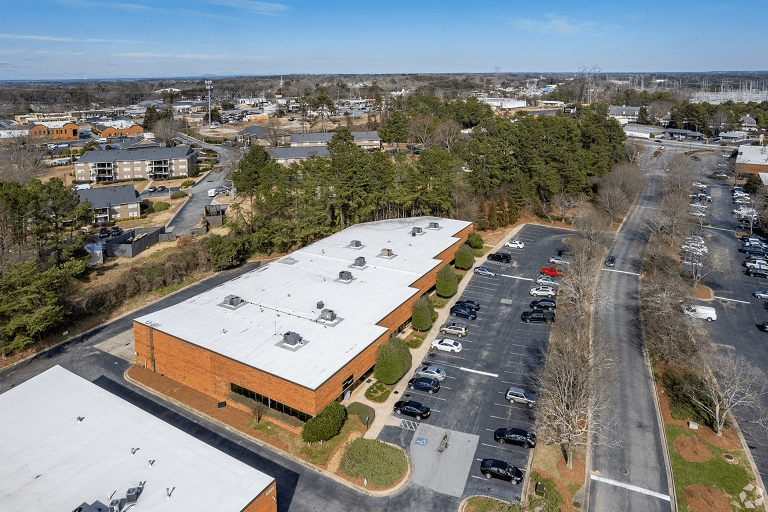
The industrial real estate market is undergoing a notable transformation as buyers increasingly gravitate towards small, unleased buildings. These properties, often overlooked in favor of larger, leased spaces, are now becoming highly sought after. The shift is driven by several factors, including flexibility, customization potential, investment opportunities, and operational control. In this article, we delve into why industrial buyers are showing a growing preference for these small, unleased buildings and what advantages they offer in today’s competitive market.
Customization Potential
One of the primary attractions of small, unleased industrial buildings is the extensive customization potential they offer. Unlike leased properties, which often come with pre-existing layouts and constraints imposed by landlords, unleased buildings provide a blank canvas. Buyers can tailor the space to meet their specific operational requirements, whether it’s for manufacturing, warehousing, or office use. This ability to design the interior layout and infrastructure to precise specifications can significantly enhance operational efficiency and productivity.
Scalability
Small, unleased buildings also offer significant scalability advantages. Businesses can start with a modest footprint and expand as their operations grow, without the limitations of a long-term lease or the need to relocate. This flexibility allows companies to manage their space requirements more effectively, scaling up or down in response to market conditions and business needs. It’s an ideal solution for growing businesses looking to maintain agility in their operations.
Value Appreciation
Investing in small, unleased industrial buildings presents a lucrative opportunity for buyers looking to capitalize on value appreciation. As the demand for industrial space continues to rise, particularly in strategic locations near major transportation hubs, the value of these properties is likely to increase. Buyers who acquire these buildings at a reasonable price can benefit from significant returns on investment over time. The potential for appreciation makes these properties attractive not only for operational use but also as a long-term investment.
Income Generation
For investors, small, unleased industrial buildings offer the potential for generating income through leasing. Once customized and equipped to meet market demands, these properties can be leased to tenants at competitive rates, providing a steady stream of rental income. This enhances the overall investment portfolio and offers financial stability. Additionally, owning the property allows investors to control tenant selection and lease terms, ensuring high-quality occupancy and favorable rental conditions.
Ownership Autonomy
Owning an industrial building instead of leasing grants buyers full control over the property. This autonomy includes making decisions regarding maintenance, upgrades, and modifications without needing approval from a landlord. This level of control is particularly appealing to businesses that require specific facility standards and operational efficiencies that may not align with typical lease agreements. Ownership autonomy allows businesses to optimize their operations and maintain their facilities to their exact standards.
Cost Efficiency
While the initial investment in purchasing a small, unleased industrial building may be higher than leasing, it can lead to significant cost efficiencies in the long run. Ownership eliminates monthly rental payments and potential rent increases, providing financial stability. Additionally, any capital improvements made to the property directly enhance the owner’s asset rather than benefiting a landlord. Over time, these cost savings can contribute to a more favorable financial outlook for the business, making ownership a financially sound decision.
Proximity to Key Markets
Small, unleased industrial buildings are often located in strategic areas close to key markets, transportation networks, and supply chain hubs. This proximity is crucial for businesses that rely on efficient logistics and distribution. Being near major highways, ports, or airports can significantly reduce transportation costs and improve delivery times, offering a competitive edge in the marketplace. Location is a critical factor in industrial real estate, and having a strategically situated property can enhance business operations.
Community and Economic Development
Investing in small industrial properties can also contribute to community and economic development. Revitalizing underutilized industrial spaces can spur local job creation, attract other businesses to the area, and enhance the overall economic vitality of the region. Buyers who invest in these properties are pivotal in fostering community growth and development. This not only benefits the local economy but also helps build a positive reputation for the business within the community.
Understanding Market Dynamics
To successfully navigate the market for small, unleased industrial buildings, buyers need to thoroughly understand market dynamics. This includes keeping abreast of trends in industrial real estate, such as shifts in demand, pricing fluctuations, and emerging locations. Working with knowledgeable real estate professionals can provide valuable insights and help buyers make informed decisions. Understanding the market helps identify the best opportunities and mitigate potential risks.
Due Diligence and Property Assessment
Conducting due diligence is essential when purchasing small, unleased industrial buildings. This involves a comprehensive property assessment, including its structural integrity, zoning regulations, and potential for future development. Buyers should also evaluate the property’s suitability for their specific needs and consider any necessary modifications or upgrades. Thorough due diligence ensures that buyers are fully aware of what they are acquiring and helps prevent unexpected issues down the line.
The growing demand for small, unleased industrial buildings reflects a broader shift in the industrial real estate market. These properties offer unique advantages in terms of flexibility, investment potential, operational control, and strategic location. For businesses looking to optimize their operations and investors seeking lucrative opportunities, small, unleased industrial buildings present a compelling option. As the market continues to evolve, these properties are likely to play an increasingly important role in the industrial real estate landscape.
Providing Commercial Real Estate Brokerage Services for Chattanooga, Cleveland and Dalton
Office • Retail • Healthcare • Hospitality • Industrial • Warehouse • Land • Multi-Family